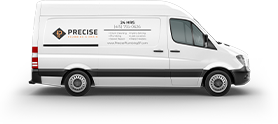Dealing with low water pressure can be a frustrating challenge in any household. Essential daily activities such as showering and washing dishes rely on a consistent and robust water flow. Not only does it impact the convenience of these tasks, but it can also be indicative of deeper issues within your plumbing system. In this article, you will find effective methods to diagnose and address the common causes of low water pressure.
Check for Leaks
A sudden drop in water pressure might mean you have a leak in your plumbing. Leaks can cause water to escape before it reaches your fixtures, leading to lower pressure. Start by checking all visible pipes, like those under sinks or in the basement, for signs of moisture or water damage.
Sometimes leaks are hidden, such as those inside walls or underground. If your water bills suddenly increase without a change in usage, it could be a sign of a hidden leak. A professional plumber with specialized tools can help find and fix these leaks to prevent further damage.
When a leak is found, it’s important to repair it quickly to restore proper water pressure. Minor leaks might just need tightened connections or new gaskets, but bigger problems could require replacing sections of pipe. Ignoring leaks can cause ongoing low pressure and lead to structural damage or mold.
After fixing the leak, keep an eye on your water pressure and talk to a plumber if you still have issues. Sometimes a leak can introduce air into the pipes, which a plumber can remove to ensure steady water flow. Regular checks will help keep your water pressure reliable.
Clean or Replace the Aerator
Low water pressure can sometimes be caused by a clogged aerator, which is the small part at the end of your faucet. Hard water can leave mineral deposits that block the water flow. If you notice water spraying unevenly or reduced flow at one faucet while others work fine, the aerator might be the issue.
To fix this, unscrew the aerator from the faucet and check for any debris. Soaking it in vinegar can help dissolve the minerals. If cleaning doesn’t improve the flow, you may need to replace the aerator.
Replacing it is easy and doesn’t need special tools. You can find new aerators at hardware stores and simply screw the new one onto the faucet. A new aerator will help distribute water evenly and boost pressure. Regularly cleaning the aerator can help keep your water pressure steady, especially if you have hard water. This simple maintenance step can prevent future problems and ensure a consistent water flow.
Inspect the Water Pressure Regulator
If your home has a water pressure regulator, it’s important to check it if you’re experiencing low water pressure. This device helps keep your water pressure steady and is usually found where the main water line comes into the house. If it’s not working properly, it can cause water pressure to drop.
To inspect the regulator, look for signs of wear or damage. Adjusting it can be tricky and requires some plumbing know-how. If the regulator looks worn out or the pressure gauge seems off, it’s best to call a plumber. A professional can adjust or replace the regulator to get your water pressure back to normal.
If adjusting the regulator doesn’t fix the problem, it might be failing. Watch for sudden changes in water pressure or a steady decline, which could mean the regulator is no longer working well. Replacing it usually fixes the issue and ensures consistent water pressure.
Regularly checking and maintaining your water pressure regulator can help avoid problems. Scheduling periodic inspections with a plumber can extend the life of the regulator and keep your water pressure steady.
Clean the Pipes
Over time, pipes can get clogged with sediment and mineral buildup, which reduces water flow and lowers pressure. To keep water pressure strong, it’s important to clean the pipes regularly. This is especially true if you notice a gradual drop in water pressure throughout your home.
For pipes you can see, like those under sinks, you can start by cleaning the outside and checking for any obvious sediment. However, the inside of the pipes, where most of the buildup happens, usually needs professional cleaning.
Plumbers have the right tools and know-how to clean pipes thoroughly. They might use methods like hydro-jetting to blast away years of sediment and restore the pipes. This not only improves water pressure but also helps prevent damage and extends the life of your plumbing.
After a professional cleaning, it’s a good idea to set up regular maintenance to keep your pipes in good shape. Ask a plumbing expert how often you should clean your pipes based on your water quality and how much you use them.
Enjoy an Optimal Plumbing System
At Precise Plumbing & Drain, we specialize in comprehensive plumbing solutions to keep your home’s water system running smoothly. Contact us today to schedule a consultation and ensure your plumbing system is performing at its best.



